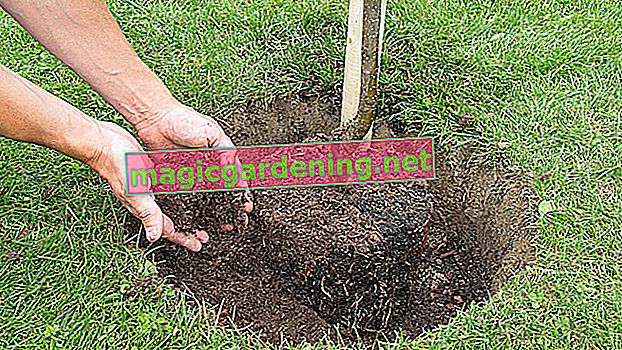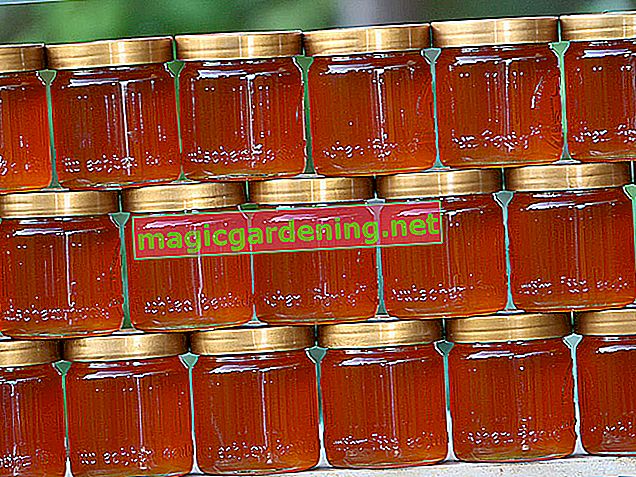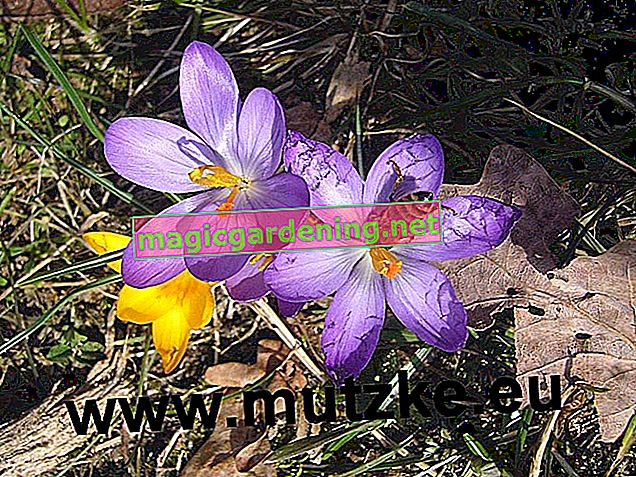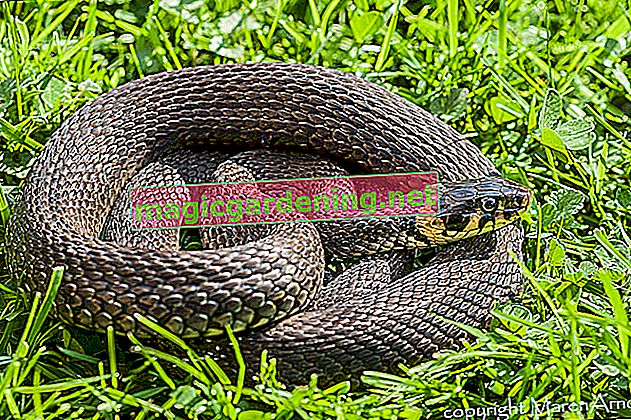
Diseases
Most cherry tree diseases are fungal diseases. Therefore, the selection of the resistant varieties is particularly important. The infected woody plants are effectively combated by suitable cutting and spraying measures. The pest infestation can be contained by targeted promotion of beneficial organisms (insects, birds).
also read
- How to cure your orchid from fungal attack
- Cherry tree - spraying as a last resort
- Preparations for the winter: boil down vegetables and fruit
Tree crab
Fruit tree cancer is a fungal disease that affects the wood and the bark. The affected areas change color, the bark becomes dry and cracks, and over time, thickenings form on the affected areas. Good wound care and avoiding damage to the bark are important for prevention. The main control measure that can be used is to remove and destroy the infected areas.
Valsa disease
Valsa disease is caused by a fungal pathogen that spreads in the cortical wounds. The surface of the bark develops warts, changes color and sinks, the leaves turn yellow and die, as do the fruits. The damage pattern is also characterized by rubber flow. Valsa can be prevented by avoiding unsuitable locations. To combat it, cut out the affected areas, close wounds well.
Monilia
The Monilia occurs as a peak drought or as fruit rot. In the case of the former, the flowers at the tips of the branches wither and wither, and the affected branches then die off. The fruit rot affects the fruits that first rot and later form what are known as fruit mummies. It is characteristic of both clinical pictures that the dried flowers or fruits stick to the branch. These are the breeding grounds for the mushroom and should be removed as soon as possible! The dead branches should be cut back down to the healthy wood.
Shotgun Sickness
Shotgun disease manifests itself in the fact that reddish spots are initially visible on the leaves, which gradually darken and later turn into holes, so that the leaves look like they have been shot. If the infestation is very severe, the tree sheds its leaves prematurely. If the fruits are also affected, they cripple and the shoots die. Chemical control of the disease on the leaves occurs before flowering. The affected shoots are cut back radically.
Pests
- Frostworm: the caterpillars of the butterfly eat the young leaves and flowers; The glue rings provide a remedy.
- Cherry fruit fly: sweet cherries in particular are endangered; Infestation of the fruits by the white maggot; Combat with yellow boards.
- Black cherry aphid: attacks shoot tips of sweet and sour cherries; Inhibits growth for young trees, only timely spraying will help.
Tips & Tricks
The birds in the garden are useful because they help control the pests. However, the blackbirds and starlings also like to eat the delicious fruits of the sweet cherry. So that the damage does not exceed the benefit, protect the crown with a close-meshed net when the fruit ripens.








